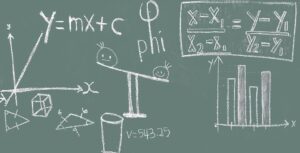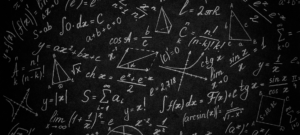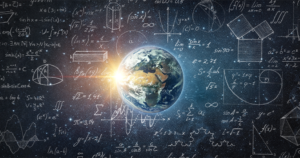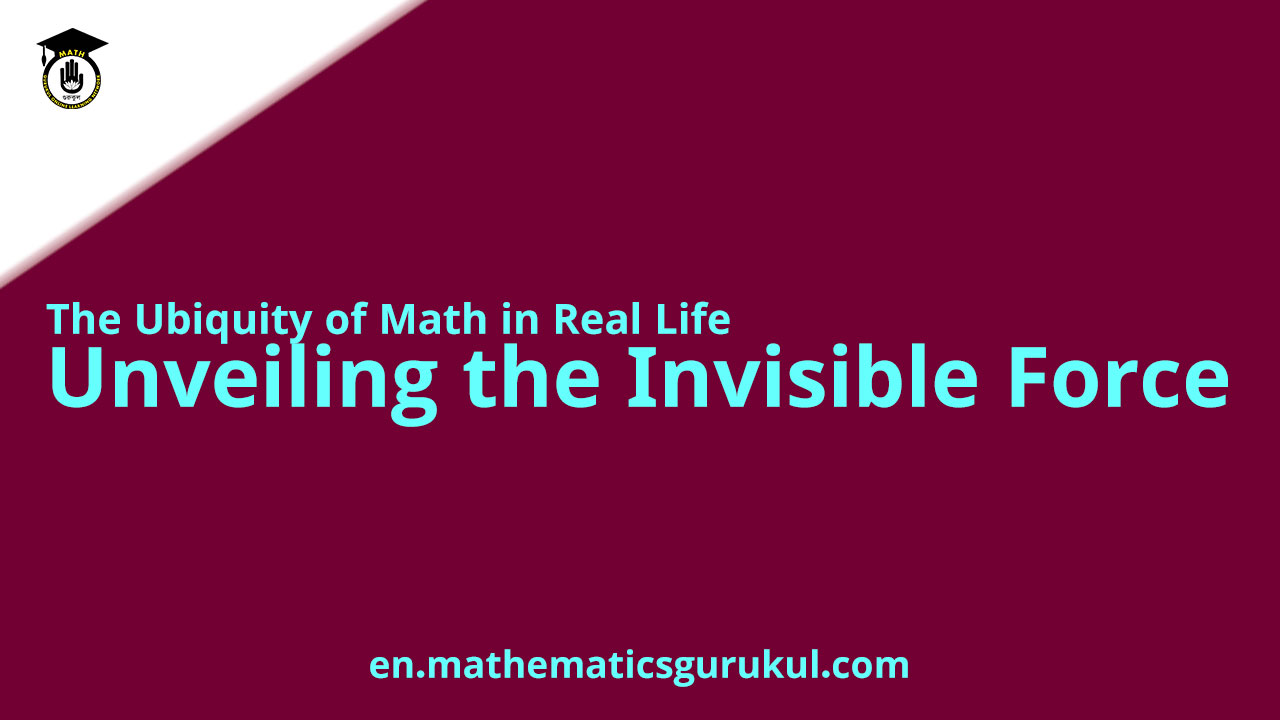The Ubiquity of Math in Real Life: Unveiling the Invisible Force. Mathematics often appears as an abstract subject confined to classrooms and textbooks, but in reality, it is an indispensable part of our daily lives. From managing finances to cooking, from planning travel itineraries to designing buildings, math plays a crucial role in a myriad of real-life scenarios. This article explores the pervasive presence of math in everyday activities and highlights its practical applications.
The Ubiquity of Math in Real Life: Unveiling the Invisible Force
Financial Management
One of the most common real-life applications of math is in financial management. Whether you are budgeting for the month, calculating interest on a loan, or figuring out the best investment options, math is at the core of these activities.
– Budgeting: Creating a budget involves basic arithmetic to track income and expenses. Understanding percentages and proportions helps in allocating funds for savings, necessities, and discretionary spending.
– Interest Calculations: Knowing how to calculate simple and compound interest is vital for managing loans, savings accounts, and credit cards. This understanding can significantly impact financial decisions and long-term planning.
– Investment: Evaluating investment opportunities requires knowledge of statistical concepts such as mean, variance, and standard deviation to assess risk and return.

Cooking and Baking
Cooking and baking are everyday activities that heavily rely on math. Precise measurements, conversions, and adjustments are crucial to achieving the desired results.
– Measurements: Recipes often call for specific measurements, such as cups, teaspoons, or grams. Understanding these units and how to convert between them ensures accuracy in ingredient proportions.
– Scaling Recipes: Adjusting recipes for different serving sizes involves multiplication and division. For instance, doubling a recipe or halving it requires proportional calculations.
– Timing: Cooking times and temperatures are critical for proper preparation. Calculating the total cooking time, especially when preparing multiple dishes, requires addition and multiplication.
Shopping and Discounts
Shopping, whether for groceries or clothing, involves various mathematical concepts. From comparing prices to calculating discounts, math helps us make informed purchasing decisions.
– Price Comparison: Evaluating unit prices (cost per unit of weight or volume) helps determine the most cost-effective options. This is particularly useful when comparing bulk purchases with regular-sized items.
– Discount Calculations: Understanding percentages is essential for calculating discounts during sales. For example, knowing how to calculate 20% off on an item’s price ensures you are aware of the savings.
– Budgeting: Keeping track of spending during shopping trips helps in adhering to a budget and avoiding overspending.

Travel Planning
Travel planning involves a series of mathematical calculations to ensure a smooth and efficient trip. From estimating travel times to budgeting for expenses, math plays a vital role.
– Distance and Time: Calculating travel distances and estimated travel times involves basic arithmetic and understanding speed and distance relationships.
– Currency Conversion: When traveling internationally, converting between different currencies requires multiplication and division based on the current exchange rates.
– Itinerary Planning: Scheduling and coordinating various activities during a trip requires time management skills and an understanding of time zones.
Home Improvement and Interior Design
Home improvement projects and interior design rely heavily on math for planning, measurements, and cost estimation.
– Measurements: Accurate measurements are crucial for tasks such as cutting materials, placing furniture, or installing fixtures. Understanding geometry helps in calculating areas and volumes.
– Cost Estimation: Budgeting for materials and labor involves addition, multiplication, and percentage calculations to estimate the total cost of a project.
– Spatial Planning: Designing a functional and aesthetically pleasing space requires an understanding of proportions, symmetry, and balance.
Health and Fitness
Maintaining health and fitness involves various mathematical concepts for tracking progress and planning routines.
– Nutrition: Understanding nutritional labels and calculating daily intake of calories, proteins, fats, and carbohydrates helps in maintaining a balanced diet.
– Exercise: Designing an effective workout routine involves calculating the duration, intensity, and frequency of exercises. Tracking progress requires understanding statistical measures such as averages and trends.
– Medical Dosages: Accurate dosage calculations are critical for administering medications. This involves understanding ratios, proportions, and unit conversions.

Environmental Awareness
Mathematics plays a significant role in understanding and addressing environmental issues. From calculating carbon footprints to optimizing resource usage, math helps in promoting sustainability.
– Carbon Footprint: Estimating personal or organizational carbon footprints involves understanding emissions factors and performing multiplication and addition.
– Resource Management: Efficient use of resources such as water and energy requires knowledge of consumption patterns and optimization techniques.
– Waste Reduction: Calculating the impact of waste reduction measures, such as recycling or composting, involves understanding percentages and statistical analysis.

Math is an integral part of our daily lives, often in ways we may not immediately recognize. Its applications span a wide range of activities, from simple tasks like cooking and shopping to complex endeavors like financial planning and environmental sustainability. By understanding and appreciating the role of math in real life, we can make more informed decisions, solve problems more effectively, and ultimately lead more efficient and balanced lives.
Embracing math as a practical tool rather than an abstract concept can enhance our abilities and open up new opportunities for personal and professional growth. Whether you’re budgeting for a household, planning a vacation, or designing a new home, math is the invisible force guiding you towards success.
